Chapter 4, Part 2
At the turn of the 16th century, the Portuguese significantly increased their presence around the Indian Ocean by conquering strategic ports in the region. It was Afonso de Albuquerque, by the order of King Manuel I of Portugal, who led naval military campaigns to capture Aden (the gateway to the Red Sea) and Ormuz (the gateway to the Persian Gulf, known as Hormuz today). Albuquerque’s conquest of Goa, however, was never part of the king’s plan although in the decades that followed the Portuguese colony in the Indian subcontinent would prove to be a very important colonial post.
The same king ordered Albuquerque to capture Malacca, a major port strategically located in Mainland Asia separated from Sumatra by the Strait of Malacca – a busy sea route connecting East Asia and the Indian Ocean. Controlling the trade route from India to China was the main goal of the king, but soon the Portuguese would learn that they were not the only major power seeking control of the historically lucrative sea route.
Established in the early 15th century by Parameswara, a prince from Sumatra who fled from Singapore following the attack of Majapahit, a regional powerhouse based in Java, Malacca grew into an important port within decades. In 1509 the Portuguese made their first ever contact with Malacca, and two years later Afonso de Albuquerque himself set sail from Goa and led a mission to conquer Malacca.
After sustaining assaults for about one month, Malacca eventually fell into the Portuguese hands and its sultan fled to Bintan, an island near Singapore which is now part of Indonesia. However Portuguese control of Malacca was heavily challenged by regional powers, from Java-based Sultanate of Demak to Sumatra-based Sultanate of Aceh. Malacca was also a tributary state of the Ming dynasty at that time, therefore the victory of the Portuguese over the ruler of Malacca led to increased hostilities towards Portuguese merchants and explorers in China.
For decades Portuguese Malacca’s hostile neighbors had attempted to defeat the European power, but none of them prevailed. However such prolonged enmity helped new trade ports along the Strait of Malacca to thrive as many Javanese, Sumatran and Chinese merchants chose to avoid Malacca altogether. The Portuguese determination to defend its possession brought unintended consequences and resulted in the failure to develop Malacca as the most prominent port in the region.
In the late 16th century following the Dutch revolt against the king of Spain and Portugal, the Portuguese shifted their staple port from Antwerp (at that time the most important staple port in the Low Countries) to Hamburg, effectively diminishing access for the Dutch to the spice trade. This unfortunate situation was cleverly exploited by the Dutch merchants to launch their own sea expeditions to the Far East to procure spices straight from their sources. In 1602, the VOC (Dutch East India Company) was founded. Considered to be the world’s first multinational company and the first company to issue stock, the VOC possessed quasi-governmental powers including the right to wage war, negotiate treaties, mint its own coins, and establish colonies. Its massive and sophisticated operations led to its stellar growth and brought unprecedented wealth to the Dutch, which for long had been under the shadows of other European powers.
Toward the mid-17th century, the Dutch posed a serious challenge to the Portuguese hegemony in Asia, and by 1641 they successfully defeated the Iberian power in Malacca. During their colonial rule, the crimson-colored Stadthuys was built at the foot of the hill where a Portuguese fort once stood. However, developing Malacca was not a priority for the Dutch as they focused more on Batavia (modern-day Jakarta) as the center of their vast trading networks in Asia. Through the VOC, and later the Kingdom of the Netherlands, the Dutch maintained its colonial grip in Malacca until 1824 when the port was exchanged with Bencoolen (modern-day Bengkulu in Indonesia), at that time a British possession.
Centuries of trade through the Strait of Malacca not only brought European powers to the once thriving port of Malacca. Merchants from East, Southeast and South Asia, as well as the Middle East came to claim their share of fortunes generated in the city. As Malacca’s influenced waned, some of the foreign traders moved elsewhere. But the rest decided to remain, creating a Peranakan culture which is very much alive in many port cities across Southeast Asia, from Singapore to Semarang in Java.
Vestiges of Malacca’s foreign influences are apparent at the narrow and humid streets of the city today. An ornate Chinese temple with smoke from burned incense sticks wafting through its prayer halls, a whitewashed mosque with green multi-tiered roofs filled with devotees, a yellow Hindu temple a few meters away from the mosque, a crimson Dutch Protestant church next to the Stadthuys, and a towering Catholic Church of St. Francis Xavier are a testament to Malacca’s colorful, albeit at times troublesome, past.
Click here for the full list of stories from the Spice Odyssey series.
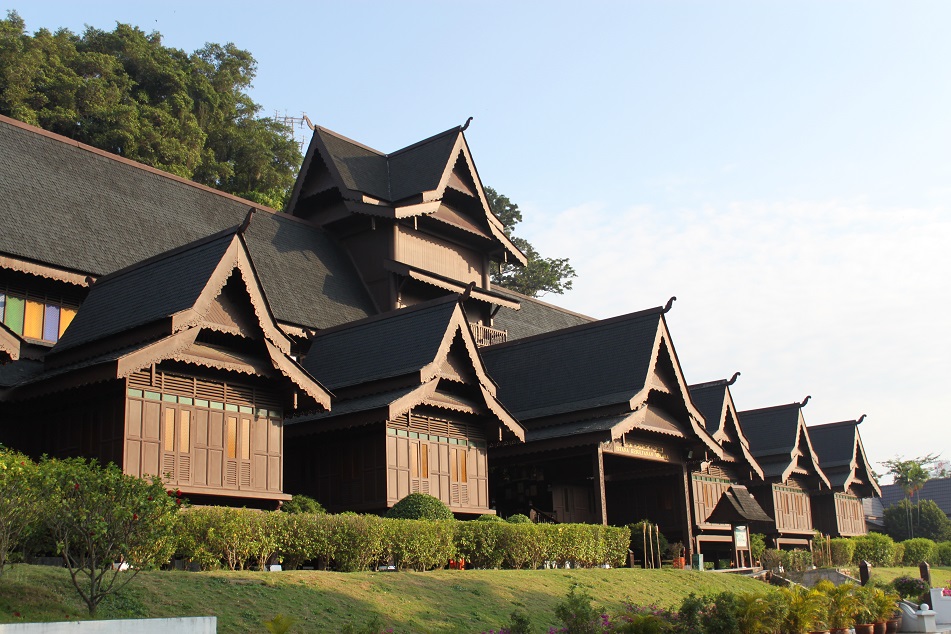
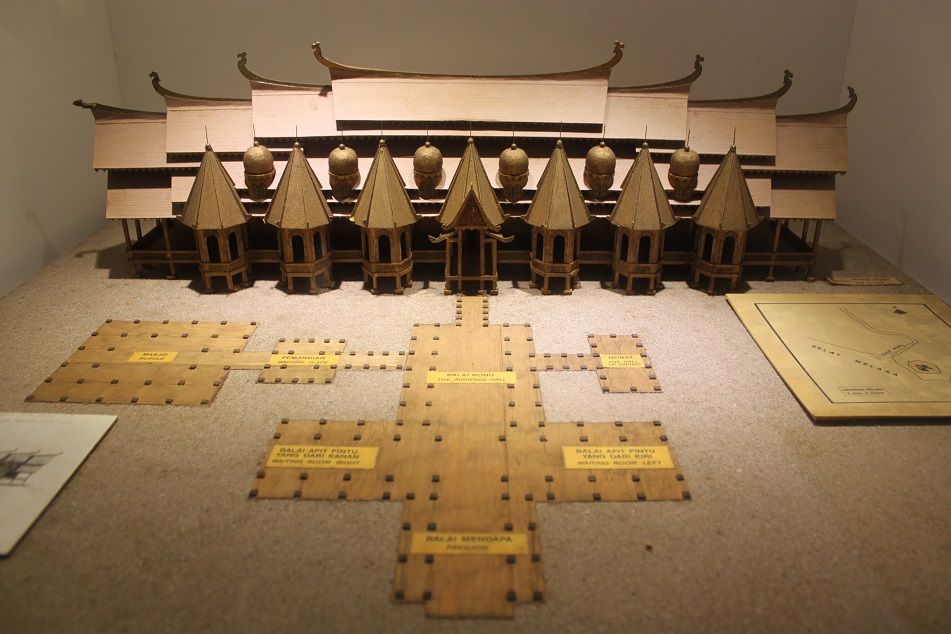
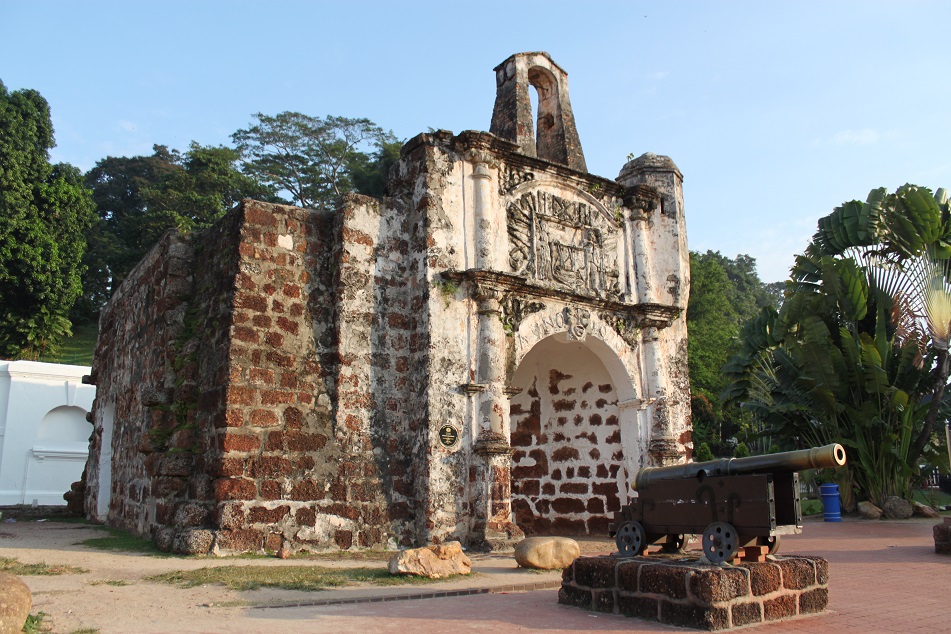
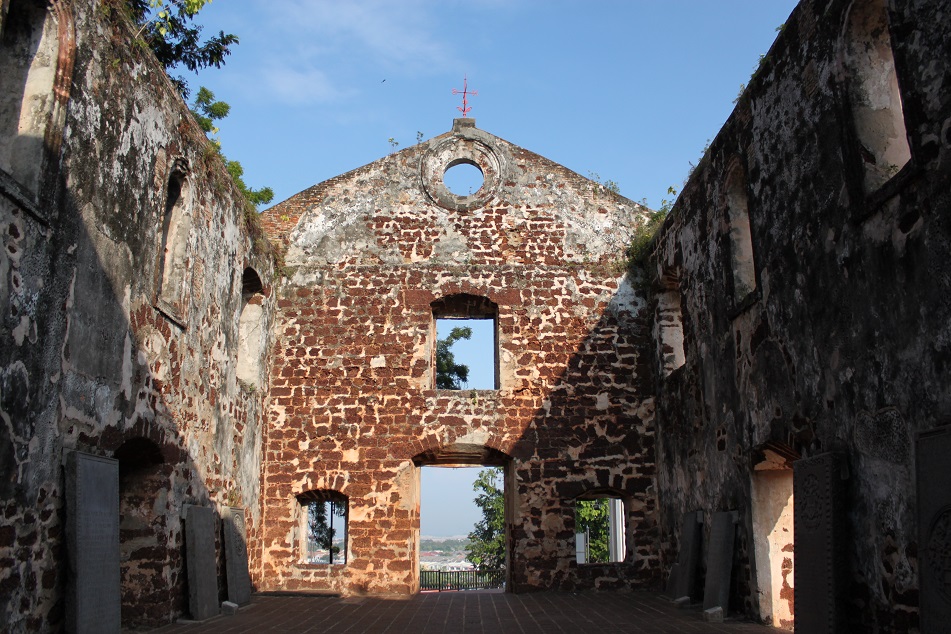
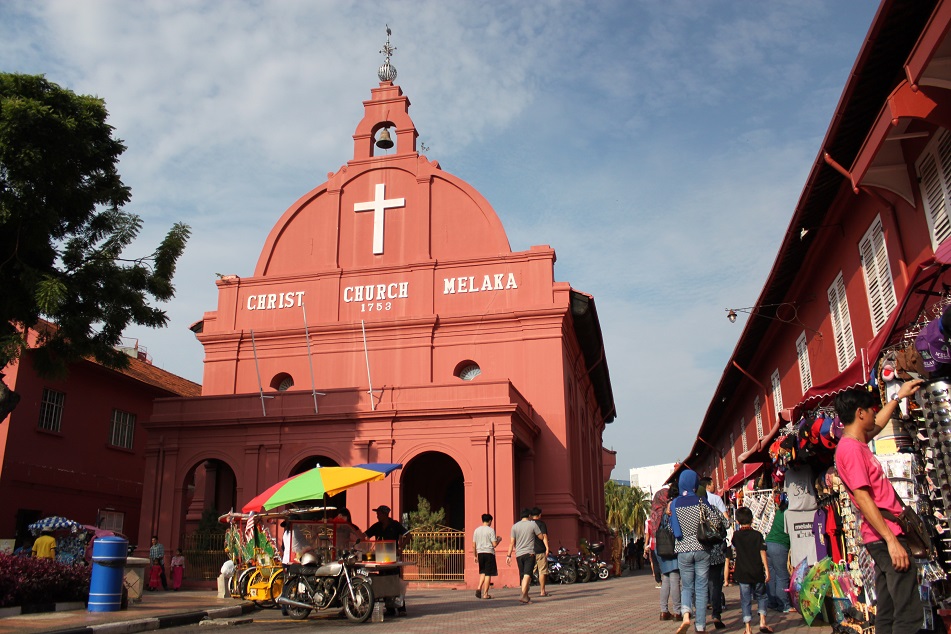
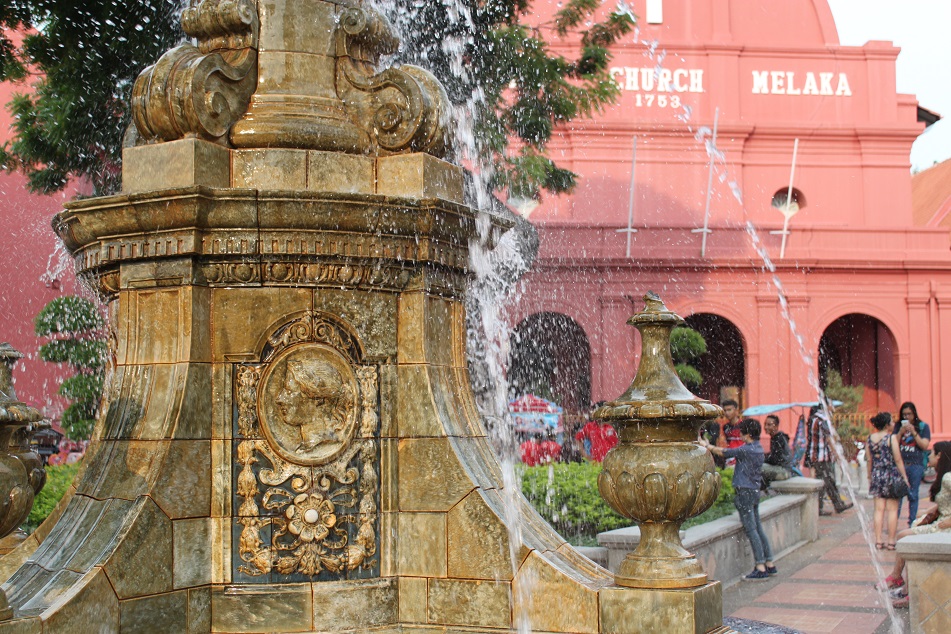
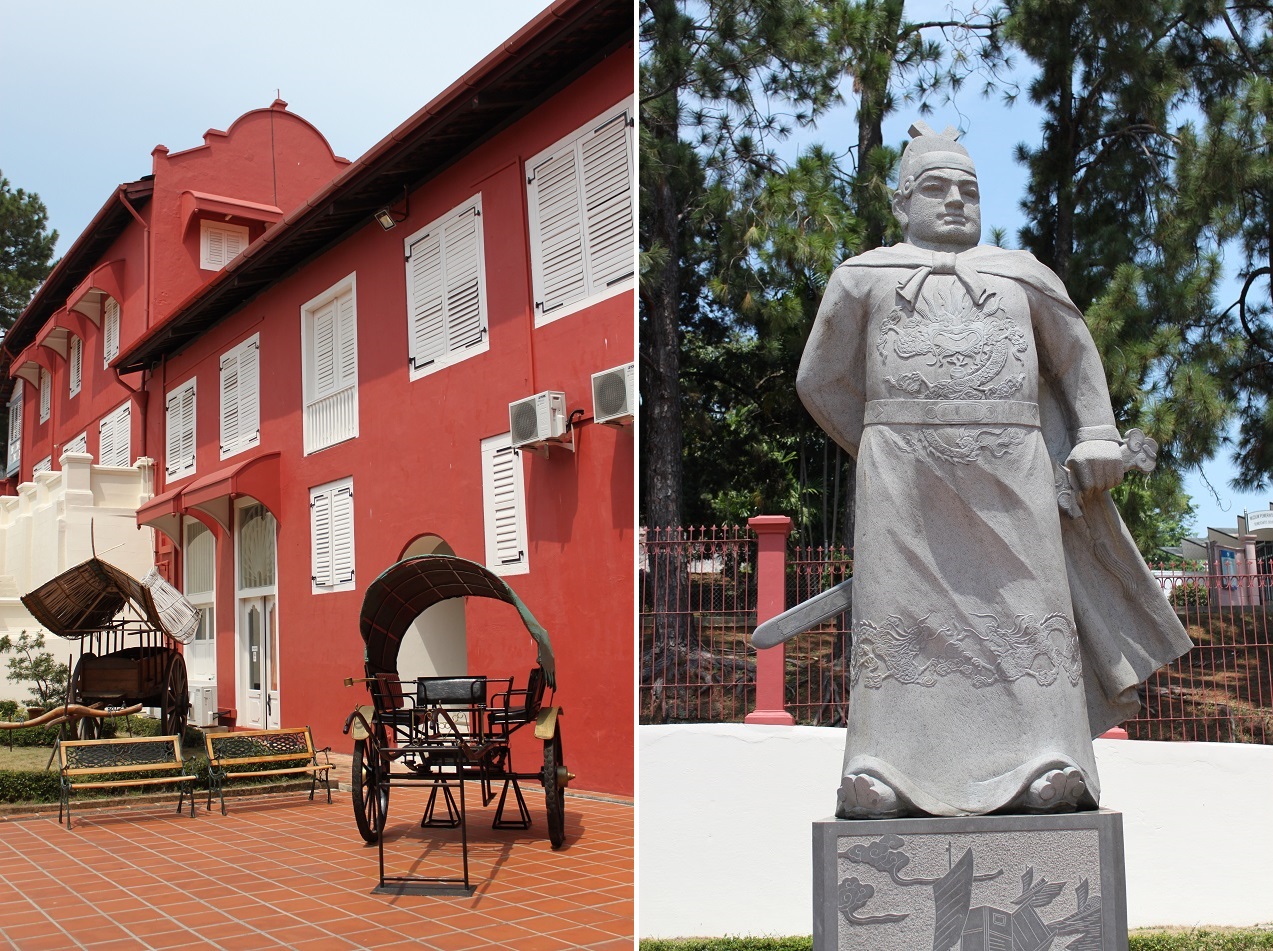
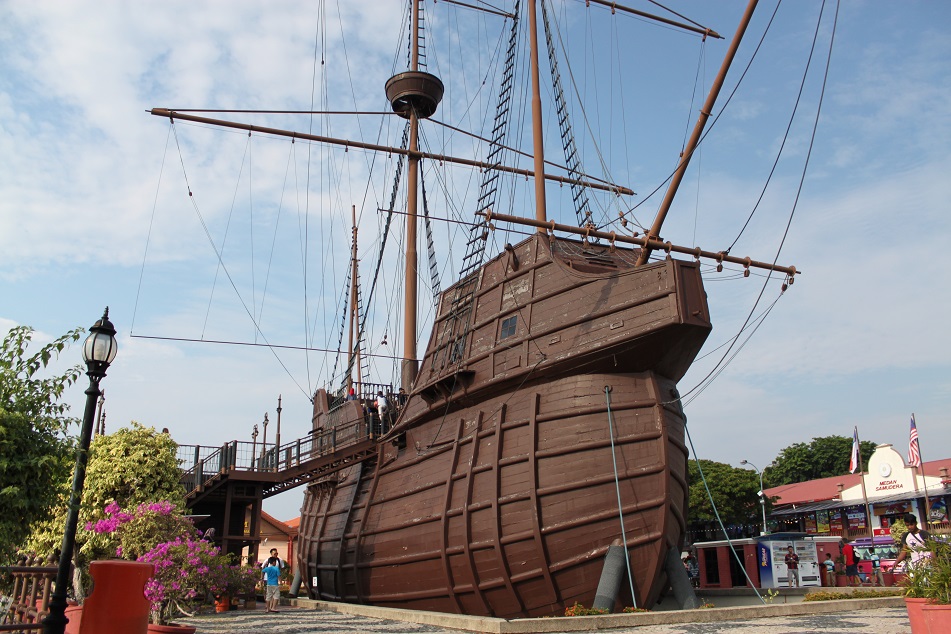

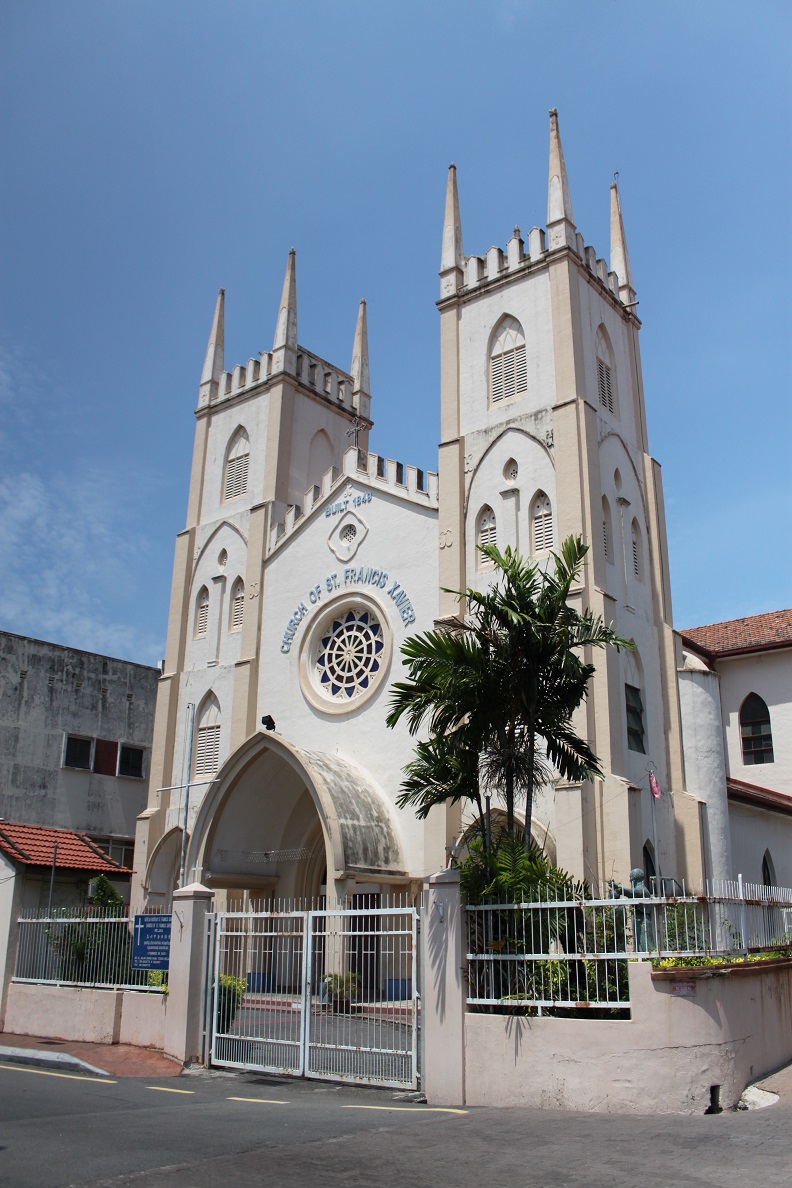

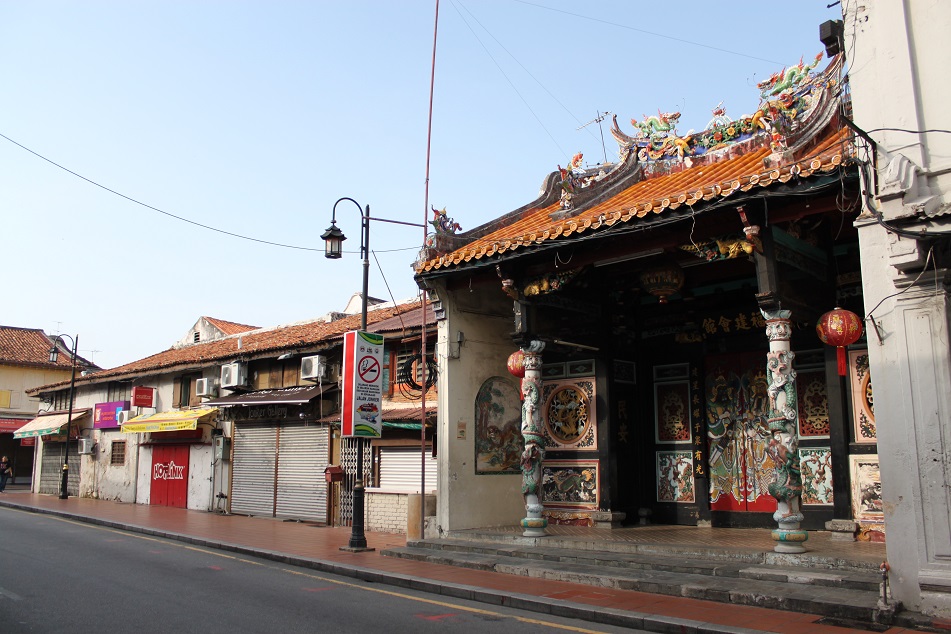
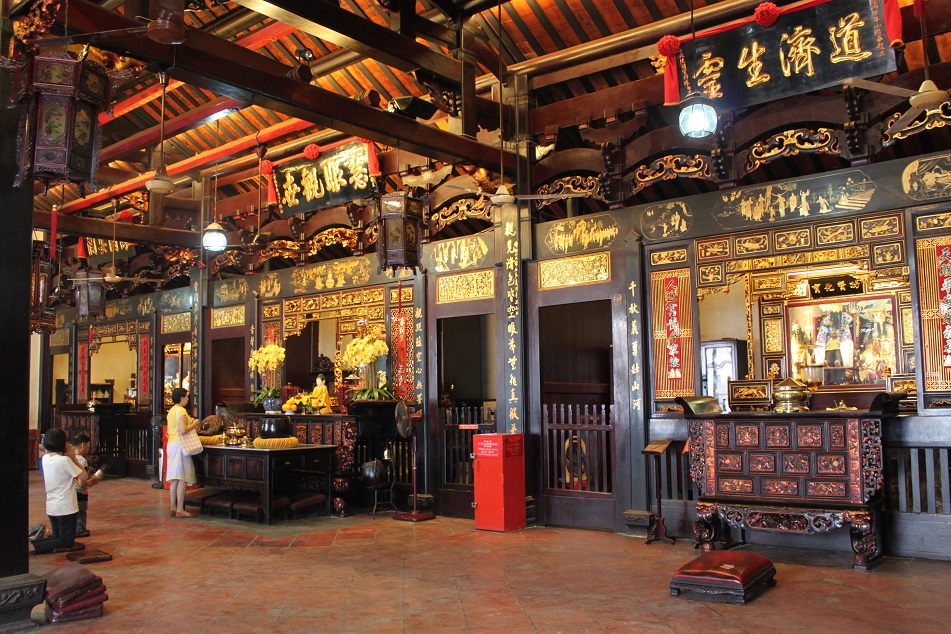
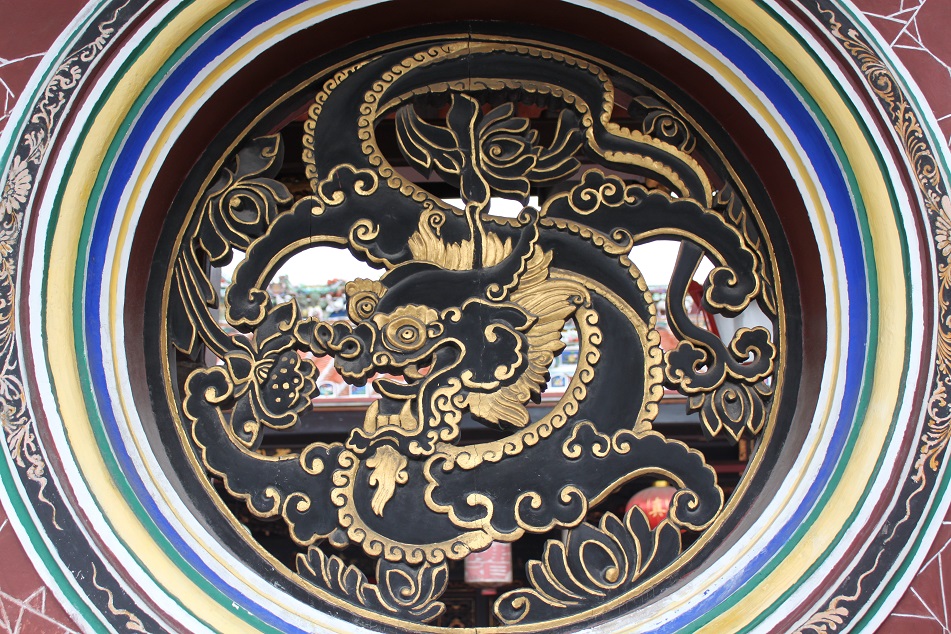
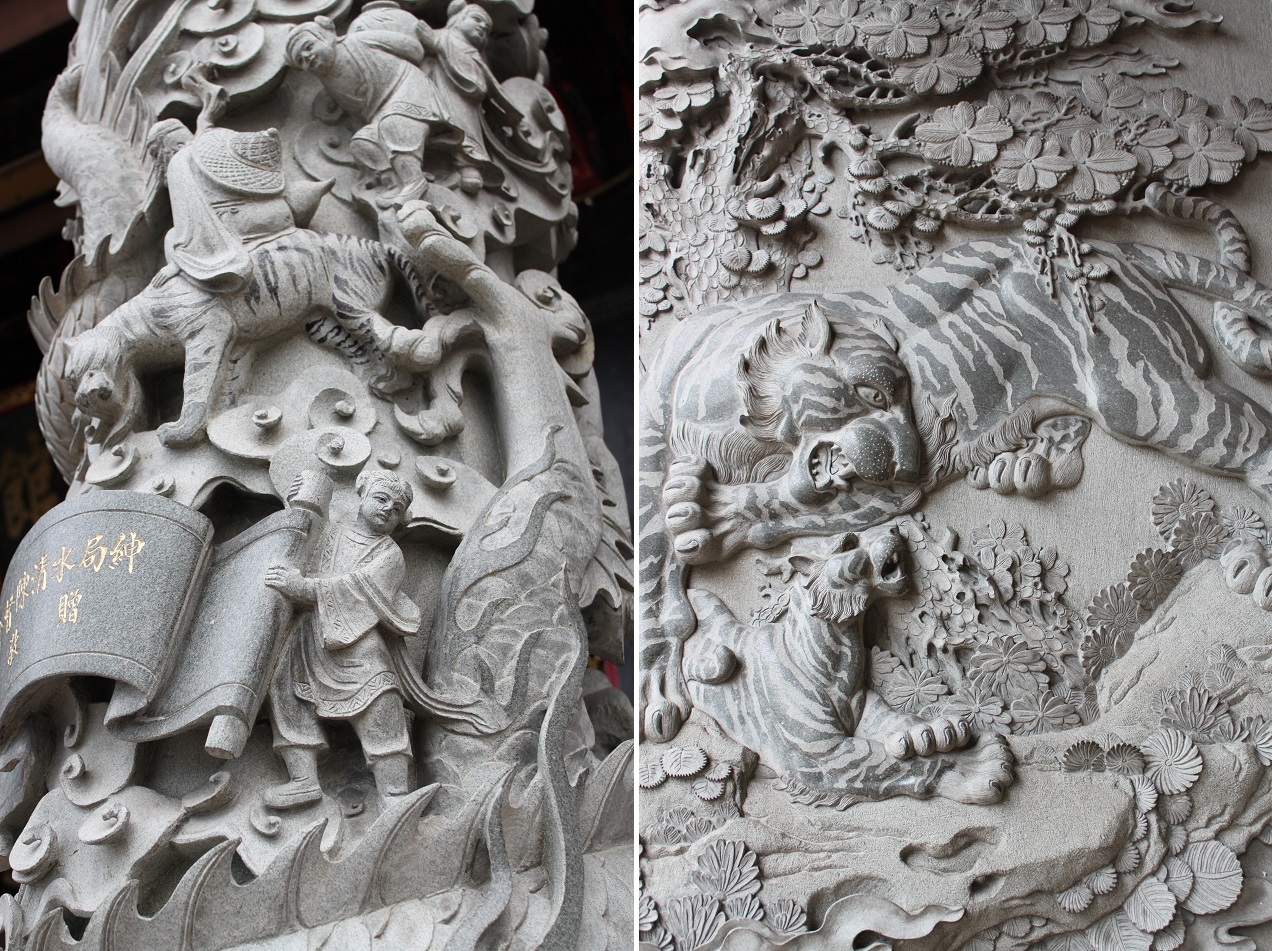
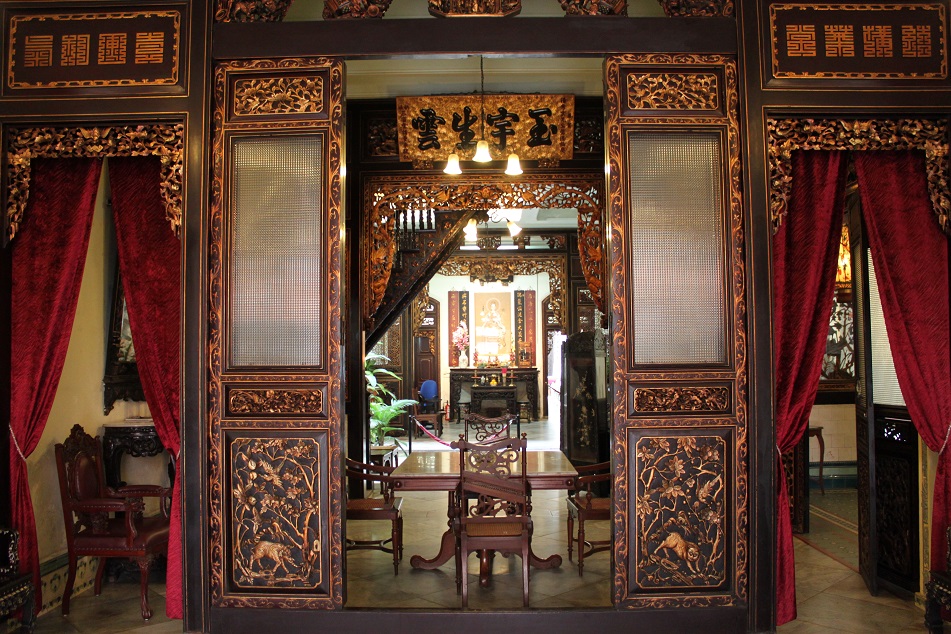
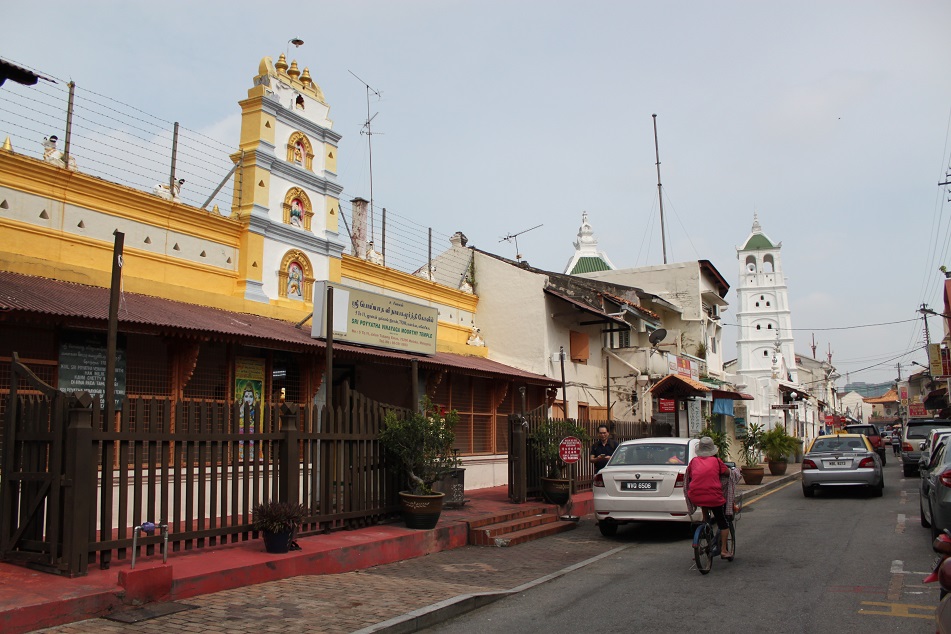
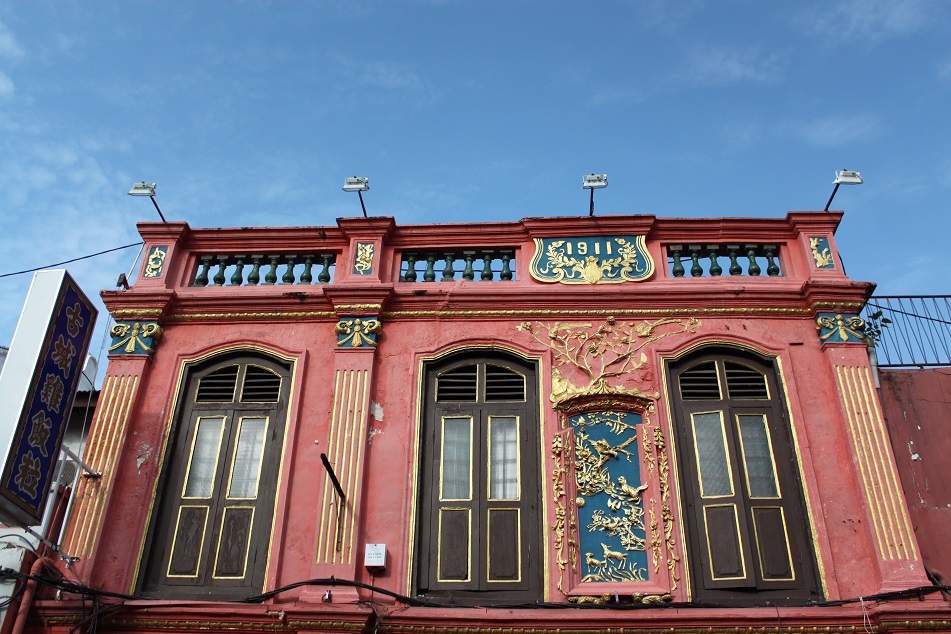
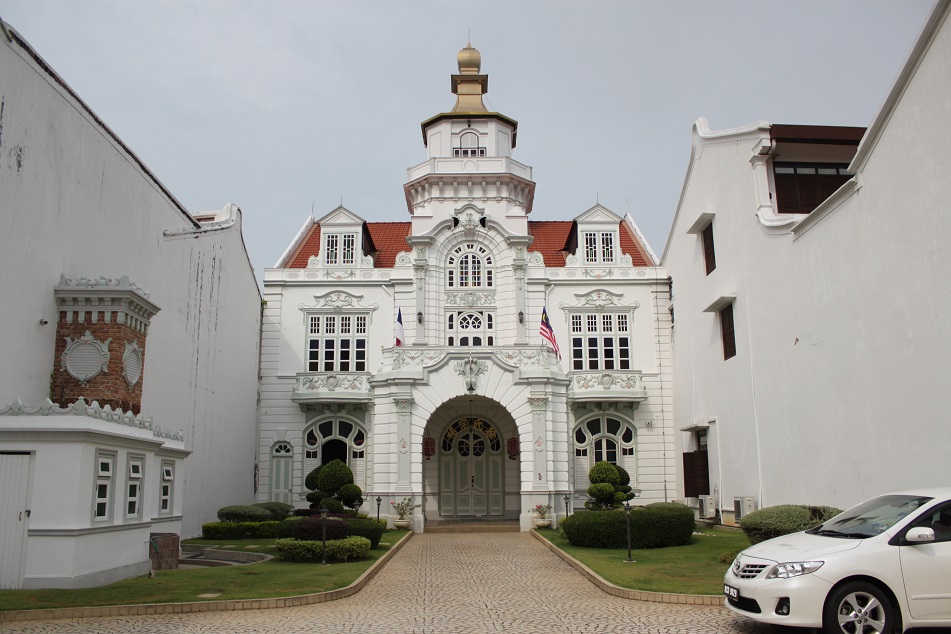

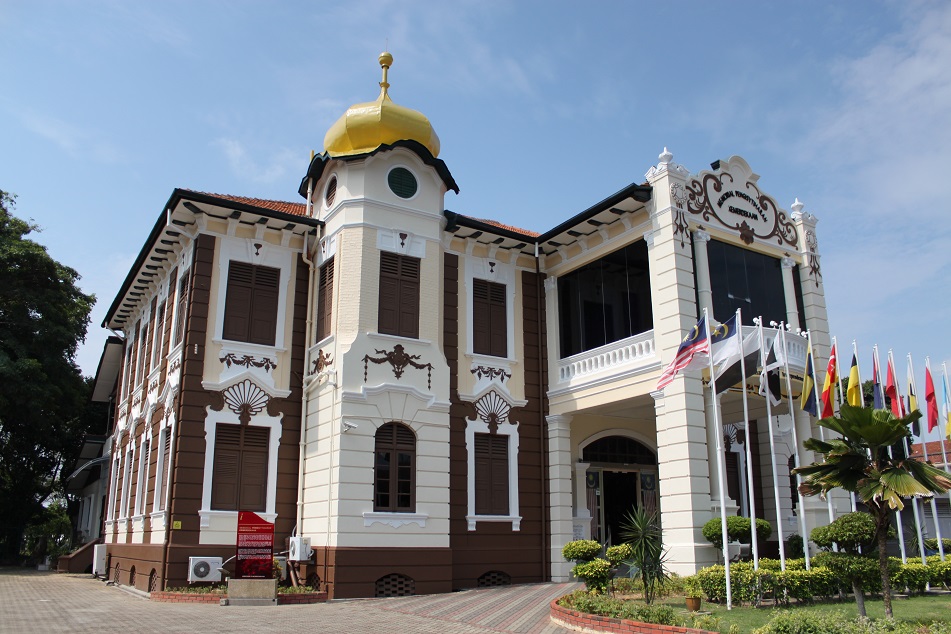
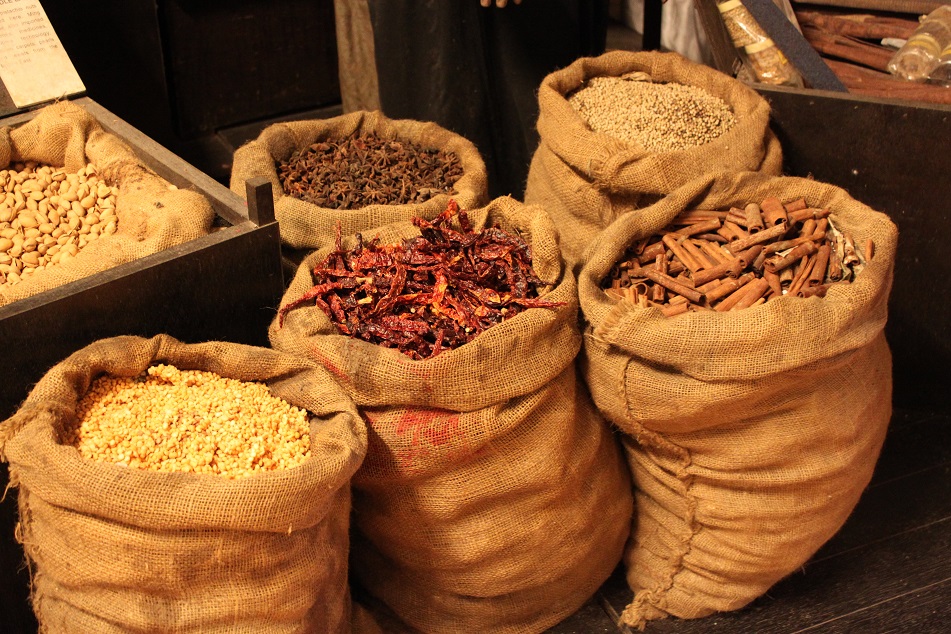

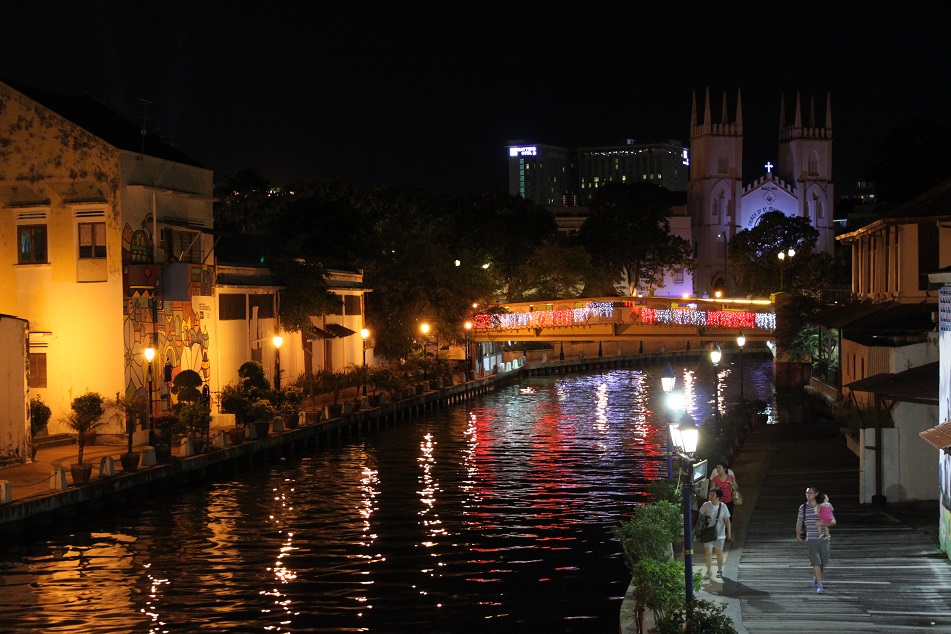
Waaah…. rasanya kembali jalan-jalan ke Malaka lagi deh… ke atas bukit trus ke Dutch Sq trus ke kawasan kp kling mosque malam2 melihat cantiknya lampu2 sepanjang sungai…
Tp tumben makanannya hilang dari foto2 hahaha… padahal hmmm yummy deh…
Btw lagi, ga sempet ke peranakan museum?
LikeLike
Foto-foto makanannya disimpen dulu mbak, buat postingan nanti di Chapter 5, hehe. Btw dulu waktu Mbak Riyanti ke Malaka panas dan lembab gak? Waktu saya ke sana lembab gila-gilaan, jadinya kemana-mana keringat selalu ngucur. Salah satu yang paling saya sukai dari Malaka itu memang sungainya sih. Enak dan nyaman buat jalan-jalan santai, apalagi malam-malam kayak Mbak Riyanti bilang. Saya cuma ke satu museum Peranakan sih, dan di dalemnya gak boleh foto-foto. 😦 Saya yang puas banget itu waktu ke Peranakan Museum yang di Penang sama di Singapura.
LikeLiked by 1 person
Waktu saya ke Malaka yaa kayak Jakarta gitu, gerah-gerah gitu tapi ga sampai bikin gobyos terus2an. Masih berangin-angin juga sih. Soalnya begitu kepanasan langsung ngadem hahaha… wah nanti kalo chapter 5 kudu ngerem bener2 niii pasti cerita juju dhau dhal bhat atau cendol peranakan keluar lagi hihihi. Ngebayangin aja udah ngiler hihihi
LikeLike
Kayaknya saya emang pergi pas lagi panas-panasnya sih. Btw di beberapa postingan selanjutnya mulai saya keluarin dikit-dikit foto makanan, biar gak bosen sama foto bangunan tua, hehehe.. 😀
LikeLiked by 2 people
Thanks for sharing this post. It is nice to learn and see something new every day. The Portuguese, Dutch and British dominance of this territory in different times has left incredible traces on that part of Asia.
LikeLike
Thank you for reading and sharing your thought, Roberto. Retracing the steps of the Europeans in Asia is indeed very interesting and often eye-opening. I wish I can travel to Argentina one day, and learn one thing or two about the historical connections between South America and Southeast Asia.
LikeLiked by 1 person
You are more than welcome in Argentina!
LikeLiked by 1 person
Kalau diperhatikan, desain atap masjid di Melaka serupa dengan masjid di Palembang, mas. Kata temenku di Palembang, itu memang pengaruh dari Palembang (Sriwijaya) saat itu, tapi pihak Melaka sendiri klaim itu hasil budaya mereka sendiri. Menarik sih menilik hubungan Melaka dan kerajaan-kerajaan Indonesia 🙂
LikeLike
Yak betul! Dari beberapa referensi yang saya baca memang arsitektur Masjid Kampung Kling ini mendapat pengaruh dari Sumatra, dan ini bisa dilihat dari desain atap masjid di Sumatra Selatan maupun di Sumatra Barat, terutama masjid-masjid kuno. Sebetulnya dari pihak Malaysia juga tidak perlu klaim sih, karena sejatinya budaya beberapa daerah di Sumatra dan beberapa wilayah di Semenanjung Malaya sangat erat kaitannya dalam sejarah.
LikeLike
Jadi berbagi budaya ya.
Btw foto sungai di malam harinya menggoda banget. Rasanya asyik buat disusuri dari sore hingga malam 🙂
LikeLike
Sungai Malaka ini memang enak buat tempat jalan-jalan santai di sore atau malam hari, Nug. Promenade-nya rapi dan tertata, lampu jalannya cantik, dan mural di sepanjang sungai juga banyak yang menarik.
LikeLike
Yesss. Rencana Februari tahun depan mau ke sana, jadi nggak tahan!
Thank you buat tulisan dan foto-fotonya, mas 🙂
LikeLike
Sama-sama Nug. Have fun di Malaka ya Februari nanti!
LikeLiked by 1 person
Visiting Malacca was a real eye-opener. I suppose its economic decline was a blessing in disguise – if it had become as successful as Singapore or Hong Kong, I doubt that much of its built heritage would have survived. It is remarkable how many museums there are (dedicated to all kinds of characters and subjects) and we probably missed out on quite a few. Thank you for another fascinating historical account!
LikeLike
Interesting thought, James! This also applies to Yangon where decades of economic isolation in a way helped preserve the city’s heritage buildings. Stadthuys was impressive, but the Cheng Ho Museum was also very interesting — it’s quite possibly one of the museums with the most comprehensive information on the Ming dynasty admiral. Makasih juga sudah baca. 🙂
LikeLike
I remember studying world history in high school. The teacher would focus on western/European history. I often wonder what was going on, on the other side of the world. Thanks for filling my curiosity.
LikeLike
Vice versa, I didn’t know much about the pre-Columbian civilizations with their impressive monuments until I started reading encyclopedia when I was in high school. I’m glad this post provided you with some information about what happened in Southeast Asia. Thanks for reading!
LikeLike
These posts are very interesting to me because as an American we learn about European colonialism and exploration mostly in the Americas, but in a parallel universe of sorts they were doing the same thing in Asia and Africa. It seems kind of crazy to me that they had enough resources to capture territory all over the world. I suppose it helps when you have bigger guns and are willing to annihilate the local population if needed!
Did you enjoy Malacca and would you recommend a visit?
LikeLike
I guess it’s the same elsewhere around the world as students tend to learn about the history of places closer to home. I thought I knew quite a lot of the history of China and Japan, until I met James. Likewise, he began to learn more about the history of the Indian and Indonesian ancient kingdoms after we started traveling together. As for the European colonial powers, it really is mind-boggling to think of how far they had gone and how much wealth they had amassed.
I did enjoy Malacca and I think you would too. It’s more about history though, and both James and I actually enjoyed Penang much more. I guess two to three days in Malacca should be enough since the city is not that big.
LikeLike
The depth of your knowledge and research on these places you have traveled never ceases to amaze me! I will never keep it all straight, but it’s so interesting to read about the history while enjoying your current-day photos. Thanks for another great post, Bama!
LikeLike
You’re too kind, Lex, but thanks! Exploring places with rich history like Malacca always helps me understand a little bit better about the world. And it’s always interesting to learn about the past connections among nations which are largely unheard today.
LikeLiked by 1 person
Bama as I read Lex above I was nodding in agreement. I confess I will never keep straight your in depth work but you create a magical experience for all weaving your incredible photos with history and intrigue.
LikeLike
What nice and encouraging words, Sue! I know history can be a bit boring and complicated, hence the photos to keep people interested in learning about the world.
LikeLiked by 1 person
What a wonderful insight. I’ve been to Malacca several times, know a bit about its history but never read a detailed blog about it until now.
LikeLike
Thank you for reading and for leaving such a kind comment, Edwin. I think I learned about Malacca in elementary school. So to be able to visit the historic city and relearn about its history were truly special.
LikeLiked by 1 person
Reblogged this on mapsworldwide blog.
LikeLike
Another beautiful summary of the history of East Asia and the incredible way you have of relaying this to the reader ~ and especially the photographs that make it that much more real… My eyes lit up when I saw the replica of Flor de Mar, there is a very romanticized feel of exploring and taking a ship to unexplored or foreign lands. It ties in with your story/history of the area. To have traveled the spice route…a great dream.
LikeLike
Thank you, Randall. It’s always nice to hear your thoughts. I think for most people old, wooden ships always evoke a sense of adventure and exploration. Even today we take boats to reach some remote islands which often provide some of the best experiences one could ask for. Retracing the sea route the Portuguese explorers took to reach the Spice Islands must be very amazing — it gives me goosebumps just thinking of it.
LikeLike
speaking of foreign influence.
We create borders and separate territories into distinct different nations and cultures. Making it seem that each area belongs to a single culture. If we look back through history though, we find that almost all cultures have been intermixed again and again and have absorbed many of the traditions of foreign lands. Through conquest and trade we have borrowed and allowed to borrow, architecture, religion, art etc. Making it hard to sometimes even make a distinction of where something actually originated. can you imagine, with our transportation and our ability to share information nowadays what the world will look like in the future. When we are now able to find a sushi joint in northern siberia and a synagogue in japan.
Awesome post as always!
LikeLike
Well said, David. That is exactly what traveling has taught me, that we are more connected than we might think. Civilizations, great or not, had left traces among themselves. And as the exchange of information has become a lot easier and faster today, we should expect to see more cultural exchanges in a global scale. Thanks for reading and sharing the insights!
LikeLike
Bama…another tour de force–photos and history co-mingling on the page like fire and ice. I have to agree with others above–so much info, so little brain power in an old dude. But I love reading your stuff. I also love the photo of the spices in the burlap bag…awesome.
LikeLike
What an intriguing way to describe this post, Badfish! Fire and ice, which remind me of Iceland. Hmm, are you trying to give me an inspiration? 🙂 Many thanks for your supportive words, as always.
LikeLiked by 1 person
Bama…ha…I don’t think you need any inspiration, dude. But yeah, fire and ice…two sides to everything, maybe.
LikeLiked by 1 person
Interesting post, I knew very little about this side of the world. Thank you for putting this together!
LikeLike
And thank you for reading! I’m glad this post gives you a glimpse of what happened in this side of the world centuries ago.
LikeLiked by 1 person
A great destination you had been! It is awesome to see the mix of culture that transpired in Malacca due to many western occupations.
LikeLike
Despite its modest size today, one can really feel Malacca’s significance in the past by exploring its museums, churches and alleys. Western as well as Asian cultures have undoubtedly left their traces in the local culture, from the food to the architecture, making Malacca one of the most picturesque colonial towns in Southeast Asia.
LikeLike
Thank you for the interesting and informative history (and more) lesson! The photos of the river at night with all the reflecting lights are super cool and similar to the river in Hoi An, Viet Nam where we are now living.
Peta
LikeLike
And thank you for reading, Peta! I arrived in Malacca before dark, and after checking in at the hotel my friend and I went out to explore the old town. The river promenade was such a delight on a rather clear night with a full moon above. I’ve heard good things about Hoi An, and I would love to go there one day!
LikeLike
Pingback: Macau: the World’s Last Portuguese Colony | What an Amazing World!
Pingback: Islands that Changed the World: Ternate & Tidore | What an Amazing World!
Waaaw..!Awesome !
LikeLike
You should go, Joel. Thanks for reading! 🙂
LikeLiked by 1 person
Pingback: Ambon: Colonialism, Peace and Music | What an Amazing World!
Pingback: Islands that Changed the World: the Bandas | What an Amazing World!
Pingback: Medan: From Deli to Tjong A Fie | What an Amazing World!
Pingback: George Town’s Light and Shadow | What an Amazing World!
Pingback: Here Come the Europeans | What an Amazing World!
Pingback: Kota Lama: Between Restoration and Reinvention | What an Amazing World!